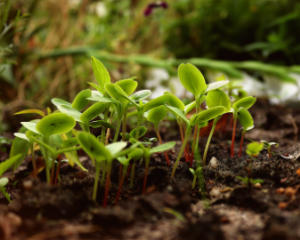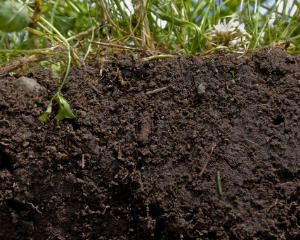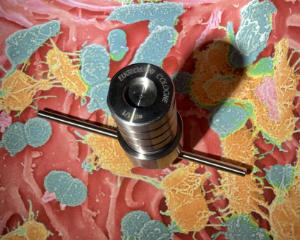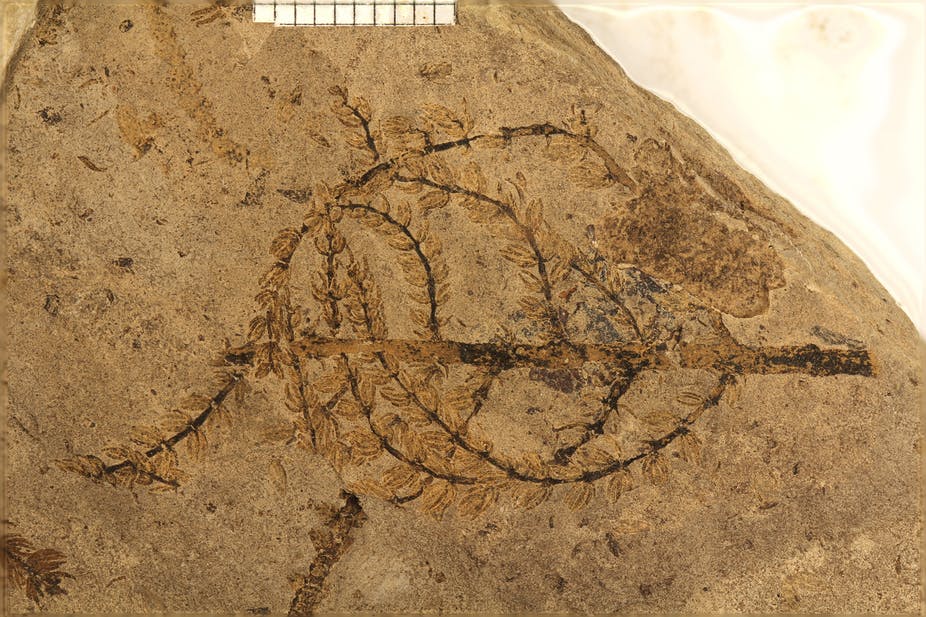
Compression of the long-leaf form of Montsechia. David Dilcher, Author provided
Fossils Suggest an Aquatic Plant That Bloomed Underwater Was Among First Flowering Plants
By David Dilcher
Sign up for our monthly newsletter!
Photosynthesis – the ability to convert energy from the sun into fuel – first appeared on Earth in single-celled organisms, which eventually evolved into algae, then mosses, then ferns. Flowering plants, now such a familiar part of our landscape, didn’t evolve until the Jurassic period, after dinosaurs and mammals had already hit the scene. At this time, insects were diversifying, and the evolving plants used the emerging bugs to carry their own genetic material from plant to plant. Flowering plants, also known as angiosperms, are a product of this early version of sex and its exchange of genetic material – so important in evolution.
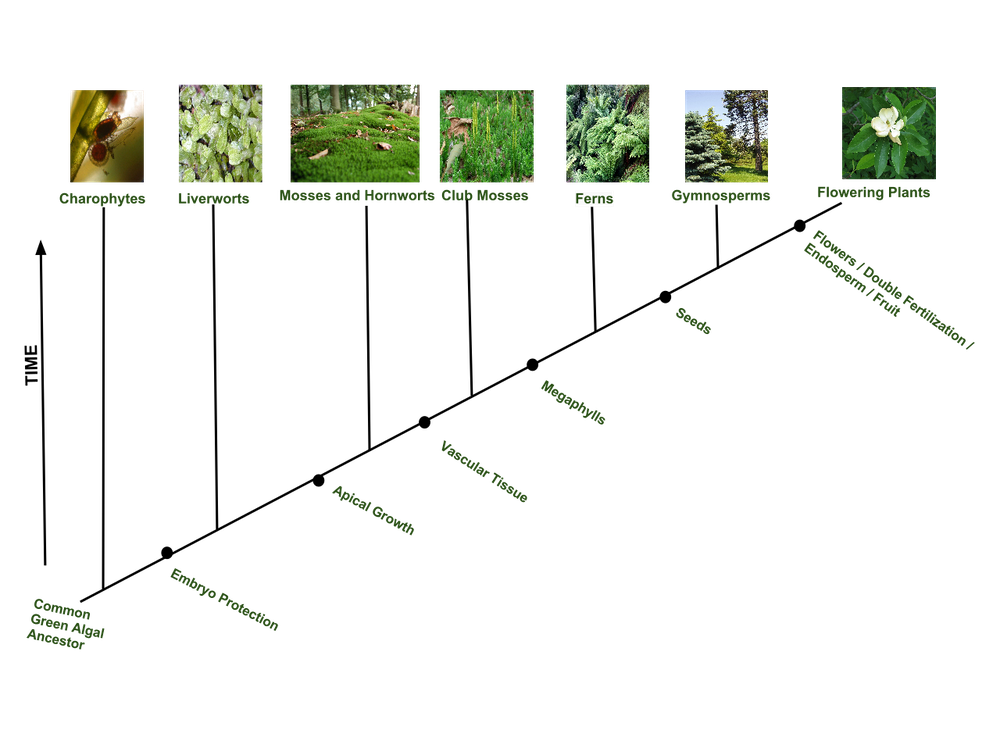
Evolution of plant diversity. Laurenprue216, CC BY-SA
A recent discovery and analysis of fossilized plants has opened up the discussion of the nature and relationships of these early plants. First found in the lithographic limestone being mined in the Pyrenees Mountains over 100 years ago, these fossils, with their strange sprawling stems, were little understood. Some thought they were mosses, some considered them to be conifers, but few recognized the fossils as flowering plants.
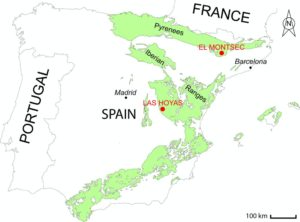
Now my colleagues and I, on a team of paleobotantists led by Bernard Gomez of Lyon, France, have presented evidence that this fossil, Montsechia, which lived as long ago as 130 million years, is the earliest known example of a fully submerged aquatic flowering plant. After careful analysis of hundreds of well-preserved newly collected fossils from northeastern Spain, we believe Montsechia flowered underwater and was pollinated underwater, living in a similar fashion to the plant Ceratophyllum that’s found around the world today.
Flowers are all about sex and getting new genetic material into the breeding line. Montsechia is an example of a very early line of evolution that solved this challenge in a new and novel way – relying on water to disperse its pollen, not the wind or animal pollinators.
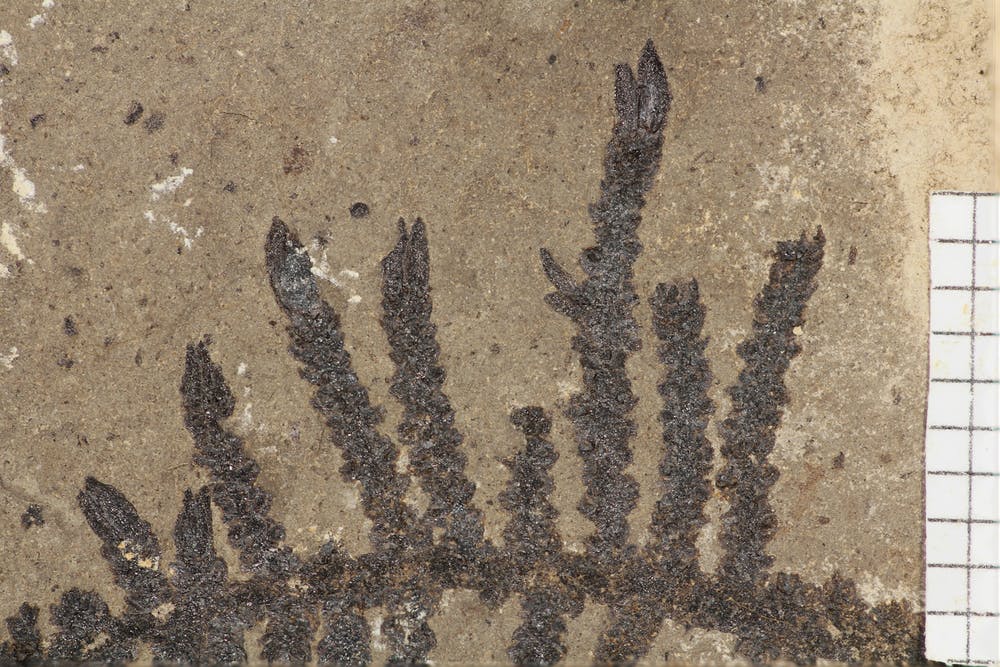
Typical fragment of the short-leaf form of Montsechia. David Dilcher, Author provided
The plant we see in these new old fossils
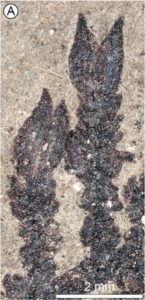
Based on the many fossil examples we examined, Montsechia floated in freshwater lakes and was submerged in the water. It had a spreading growth, branching freely. This flowering plant didn’t display any of the showy blossoms we tend to associate with flowers. But because it contains seeds enclosed in a fruit, the basic characteristic of angiosperms, it is classified as a flowering plant.
We’ve found two forms of this fossil: one form has leaves that are small and closely pressed to the stem. On this form, we frequently saw mature fruits.
The other form has leaves that extend out from the stems and only rarely are mature seeds found attached. We saw the two leaf types associated together at the same fossil localities.
Today, many flowers are made up of petals and then male stamens (with filaments and anthers that produce pollen) and female carpels (which mature into fruits and contain the seeds, like peas in a pod). We didn’t identify any male flowers or remains of where they were borne on the stems in Montsechia. It appears they had separate flowers to contain pollen organs and carpels.
Fishing around for the first flower
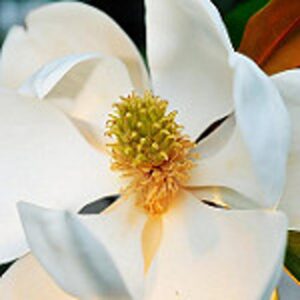
When asking the question of what the first flower in the world was like, 30 years ago some botanists said that magnolias were the typical form. Later, others suggested that perhaps water lily flowers may be a better choice.
Then the tools of molecular systematics allowed botanists to use DNA and RNA from the nuclei and chloroplasts of plant cells to puzzle out relationships based on molecular characteristics. That’s when a genus called Amborella, found living today only in New Caledonia, gained favor as a possible first flowering plant.
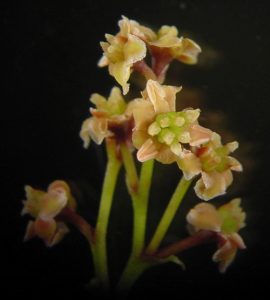
Another contender, Ceratophyllum, was also once thought to be basal to all flowering plants before being displaced by Amborella, and its position in the angiosperms has been uncertain since. Montsechia, at 130 million years old – among the oldest megafossil remains known of any flowering plant – is in the lineage of Ceratophyllum. This makes this lineage of flowering plants one of the oldest known and suggests that underwater Ceratophyllum is back in the running to be the original flowering plant.
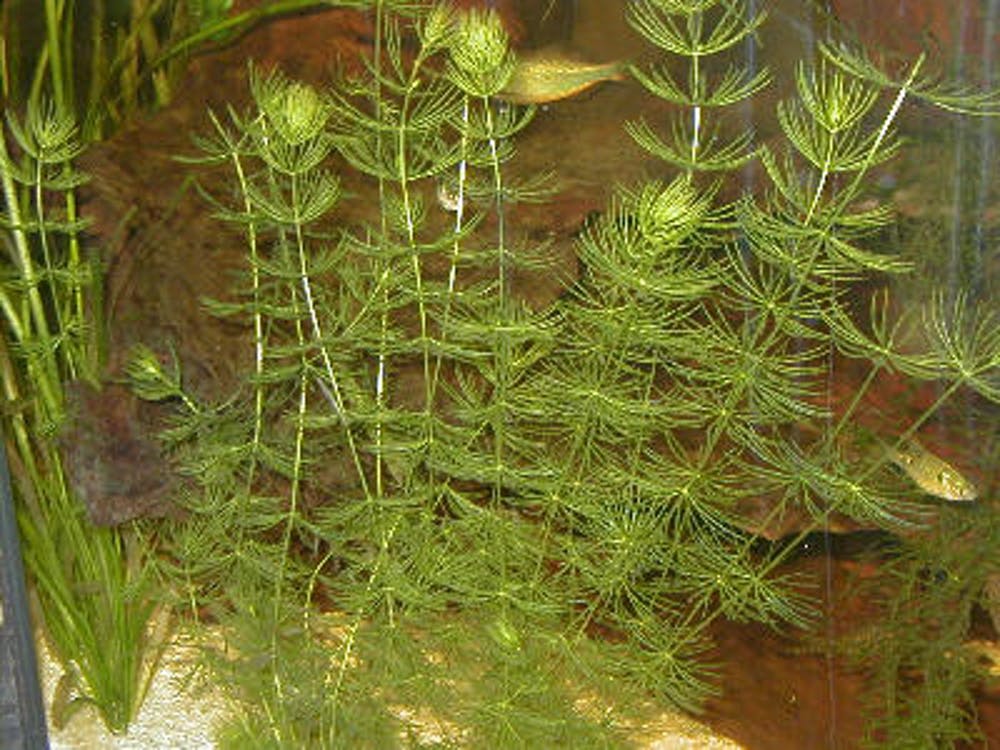
Ceratophyllum submersum are the modern version of the fossilized plant. Totodilefan
Ceratophyllum, modern descendent of first flower
Ceratophyllum consists of six species found around the world today in the single genus in its own order, Ceratophyllales. These plants, known as foxtails, live in freshwater lakes on all continents of the world today, save Antarctica.
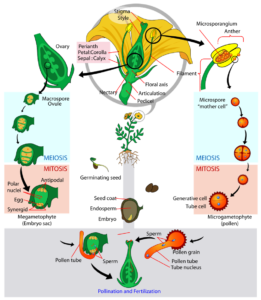
These modern-day descendents of Montsechia have separate male and female flowers with no sepals or petals, just simple reproductive organs, like stamens and carpels. When they reproduce, the stamens release the anthers that contain the pollen to float up to the water’s surface. Then the pollen is released and begins to slowly sink through the water column. As it descends, being moved by water currents, a branched pollen tube grows out. When the pollen tube makes it into the vicinity of a female, a branch will find a small hole enter and pollinate. This is how the plant fertilizes and creates a seed.
Because of the water dispersal of the pollen there is genetic mixing or outcrossing, just as if an insect had carried the pollen.
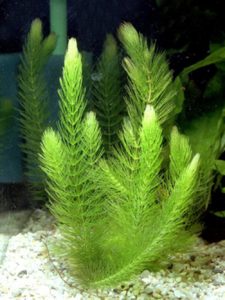
The fossil fruits of Montsechia also have a similar small pore in the fruit wall, and the seed is positioned similarly as those of Ceratophyllum today. This suggests that these very ancient flowers flowered underwater, were very simple in nature (no beautiful petals yet) and were pollinated underwater. This very early and inventive way for flowering plants to manage their reproduction so early in their evolution is impressive.
Montsechia places the Ceratophyllum lineage as one of the oldest of all the flowering plants and suggests that we need to reevaluate the nature of the evolution of the original angiosperm again.
David Dilcher, Emeritus Professor of Geological Sciences and Paleobotany, Indiana University
This article was first published in The Conversation

As Ireland transitions from the rich, smoky scent of peat-burning to a more sustainable future, its olfactory heritage is evolving. What will become the next iconic aromatic symbol of Ireland?
Click to watch the documentary trailer.



